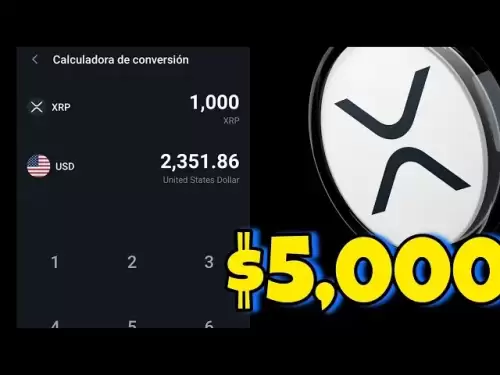-
 Bitcoin
Bitcoin $108,952.9385
-0.41% -
 Ethereum
Ethereum $2,559.0130
-0.74% -
 Tether USDt
Tether USDt $1.0002
0.02% -
 XRP
XRP $2.3490
-0.78% -
 BNB
BNB $675.8575
1.01% -
 Solana
Solana $177.0111
-2.47% -
 USDC
USDC $0.9997
0.00% -
 Dogecoin
Dogecoin $0.2278
-3.48% -
 Cardano
Cardano $0.7573
-3.06% -
 TRON
TRON $0.2708
0.29% -
 Sui
Sui $3.6333
-1.82% -
 Hyperliquid
Hyperliquid $35.1438
0.76% -
 Chainlink
Chainlink $15.5753
-4.14% -
 Avalanche
Avalanche $22.9814
-5.79% -
 Stellar
Stellar $0.2880
-2.35% -
 Shiba Inu
Shiba Inu $0.0...01443
-2.79% -
 Bitcoin Cash
Bitcoin Cash $426.6112
-3.77% -
 UNUS SED LEO
UNUS SED LEO $8.8100
0.28% -
 Hedera
Hedera $0.1905
-4.31% -
 Toncoin
Toncoin $3.0086
-1.88% -
 Monero
Monero $402.1423
0.91% -
 Litecoin
Litecoin $96.3495
-2.82% -
 Polkadot
Polkadot $4.5880
-3.33% -
 Bitget Token
Bitget Token $5.6680
1.46% -
 Pepe
Pepe $0.0...01394
-7.54% -
 Pi
Pi $0.7702
0.08% -
 Dai
Dai $0.9999
-0.01% -
 Ethena USDe
Ethena USDe $1.0007
0.03% -
 Aave
Aave $269.6023
2.98% -
 Uniswap
Uniswap $6.2194
0.22%
How to dynamically adjust the SAR stop loss?
Dynamically adjusting the SAR stop loss involves modifying the acceleration factor and maximum acceleration factor to suit market volatility, enhancing trading performance.
May 24, 2025 at 10:49 pm
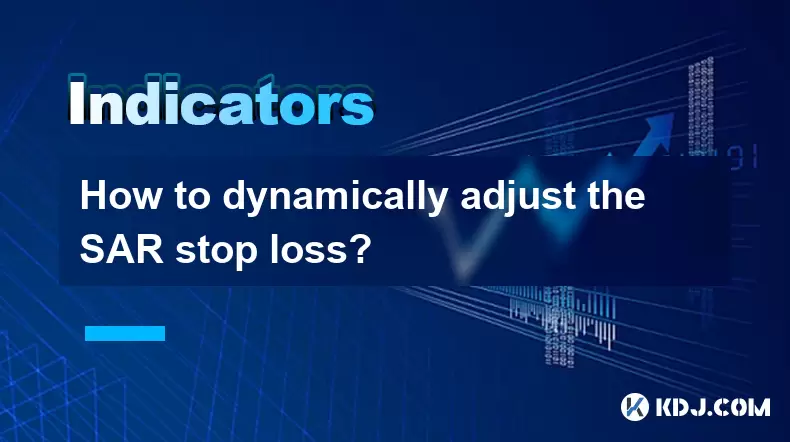
Introduction to SAR Stop Loss
The Parabolic SAR (Stop and Reverse) is a popular technical indicator used by traders to determine potential reversals in the price direction of an asset. It is particularly useful for setting trailing stop losses, which can help traders lock in profits while allowing a position to remain open as long as the trend continues. Dynamically adjusting the SAR stop loss involves modifying the parameters of the Parabolic SAR to better suit the current market conditions and trading strategy. This article will guide you through the process of dynamically adjusting the SAR stop loss, ensuring that you can optimize your trading decisions.
Understanding the Parabolic SAR
Before delving into dynamic adjustments, it's crucial to understand the basic functioning of the Parabolic SAR. The indicator is represented by dots that appear either above or below the price chart. When the dots are below the price, it suggests a bullish trend, and when they are above, it indicates a bearish trend. The SAR formula uses two parameters: the acceleration factor (AF) and the maximum acceleration factor (MAF). The default values are typically set at 0.02 for the AF and 0.2 for the MAF, but these can be adjusted to fit different trading scenarios.
Why Dynamic Adjustment is Necessary
Market conditions are not static; they fluctuate, and so should your trading strategies. Dynamically adjusting the SAR stop loss allows you to adapt to these changes more effectively. For instance, in a highly volatile market, you might want to increase the sensitivity of the SAR to capture more frequent price movements. Conversely, in a less volatile market, you might prefer a less sensitive setting to avoid being stopped out prematurely. By adjusting the SAR parameters, you can tailor your stop loss strategy to the prevailing market conditions, thereby improving your trading performance.
Steps to Dynamically Adjust the SAR Stop Loss
Adjusting the SAR stop loss involves changing the acceleration factor and maximum acceleration factor based on your analysis of the market. Here are the steps to do so:
Analyze Market Volatility: Use tools like the Average True Range (ATR) to gauge the current market volatility. Higher volatility may require a higher AF to make the SAR more responsive.
Adjust the Acceleration Factor (AF): If you find the market to be more volatile, consider increasing the AF from the default 0.02 to a higher value, such as 0.03 or 0.04. This will make the SAR dots move closer to the price, potentially triggering earlier stop losses.
Modify the Maximum Acceleration Factor (MAF): Similarly, you may need to adjust the MAF. In a volatile market, you might increase the MAF from 0.2 to 0.25 or 0.3 to allow the SAR to accelerate more quickly.
Test Your Adjustments: Before applying these changes to live trades, test them on historical data or a demo account to see how they would have performed. This can help you fine-tune the parameters to your specific trading style and market conditions.
Implement the Changes: Once you are satisfied with the adjustments, apply them to your trading platform. Ensure that you monitor the performance of these new settings closely and be prepared to make further adjustments as necessary.
Practical Example of Dynamic SAR Adjustment
To illustrate the process, consider a scenario where you are trading Bitcoin. You notice that the market has become more volatile due to upcoming economic announcements. Here’s how you might adjust the SAR stop loss:
Initial Settings: Start with the default settings of AF = 0.02 and MAF = 0.2.
Volatility Analysis: You calculate the ATR and find that it has significantly increased, indicating higher volatility.
Adjusting AF and MAF: You decide to increase the AF to 0.03 and the MAF to 0.25 to make the SAR more responsive to the rapid price movements.
Testing: You backtest these new settings on historical Bitcoin data and find that they would have improved your trading results.
Implementation: You apply these new settings to your live trading account and monitor the performance closely.
Monitoring and Further Adjustments
After implementing the new SAR settings, it's essential to continuously monitor their effectiveness. Market conditions can change rapidly, and what works today may not work tomorrow. Here’s how to keep your SAR stop loss dynamically adjusted:
Regularly Review Performance: Check the performance of your trades using the adjusted SAR settings. If you notice that you are getting stopped out too frequently or not enough, it might be time to tweak the AF and MAF again.
Stay Informed: Keep an eye on market news and events that could affect volatility. Economic reports, regulatory changes, and significant shifts in investor sentiment can all impact the effectiveness of your SAR stop loss.
Be Flexible: Be prepared to revert to the default settings or try different combinations of AF and MAF as the market evolves. The key to successful trading is adaptability.
Use Additional Indicators: Consider using other technical indicators in conjunction with the SAR to confirm trends and reversals. Indicators like the Moving Average Convergence Divergence (MACD) or the Relative Strength Index (RSI) can provide additional insights to help you fine-tune your SAR settings.
Common Mistakes to Avoid
When dynamically adjusting the SAR stop loss, it’s important to be aware of common pitfalls that can undermine your efforts:
Over-Adjusting: Constantly changing the SAR parameters can lead to over-optimization and may result in poor trading performance. Find a balance between making necessary adjustments and allowing your strategy to work over time.
Ignoring Market Context: Failing to consider the broader market context when adjusting the SAR can lead to suboptimal settings. Always take into account the current market conditions and trends.
Neglecting Backtesting: Implementing new SAR settings without thorough backtesting can be risky. Always test your adjustments on historical data before applying them to live trades.
Emotional Trading: Avoid making adjustments based on emotions rather than data-driven analysis. Stick to your trading plan and make changes based on objective criteria.
FAQs
Q: Can the Parabolic SAR be used effectively in all market conditions?
A: While the Parabolic SAR can be a valuable tool in trending markets, it may be less effective in choppy or sideways markets. In such conditions, the SAR may generate frequent false signals, leading to unnecessary stop losses.
Q: How often should I adjust the SAR stop loss parameters?
A: The frequency of adjustments depends on the market conditions and your trading strategy. It’s generally advisable to review and adjust the SAR settings at least weekly, or more frequently if there are significant changes in market volatility.
Q: Is it possible to automate the adjustment of the SAR stop loss?
A: Yes, many trading platforms allow you to automate the adjustment of the SAR parameters based on predefined rules. However, it’s important to monitor and review these automated adjustments regularly to ensure they align with your trading goals.
Q: Can I use the Parabolic SAR for entry signals as well as stop losses?
A: Yes, the Parabolic SAR can be used to generate entry signals by entering a long position when the SAR dots move below the price and a short position when they move above it. However, it’s crucial to use additional confirmation indicators to avoid false signals.
Disclaimer:info@kdj.com
The information provided is not trading advice. kdj.com does not assume any responsibility for any investments made based on the information provided in this article. Cryptocurrencies are highly volatile and it is highly recommended that you invest with caution after thorough research!
If you believe that the content used on this website infringes your copyright, please contact us immediately (info@kdj.com) and we will delete it promptly.
- Renewed Trade War Fears Rattle Crypto Prices
- 2025-05-25 02:20:15
- Google's Gemini AI Predicts Shiba Inu (SHIB) Price For June 1, 2025
- 2025-05-25 02:20:15
- Bitcoin (BTC) Trades Near All-Time Highs as Market Participants Await Regulatory Clarity
- 2025-05-25 02:15:13
- Is Cardano in Trouble After Another 11% Crash? ADA Price Outlook
- 2025-05-25 02:15:13
- Here's When XRP Could Skyrocket Toward $28, According to Analyst
- 2025-05-25 02:10:13
- Bitcoin Breaks ATH, But MVRV Ratio Tells a New Story
- 2025-05-25 02:10:13
Related knowledge
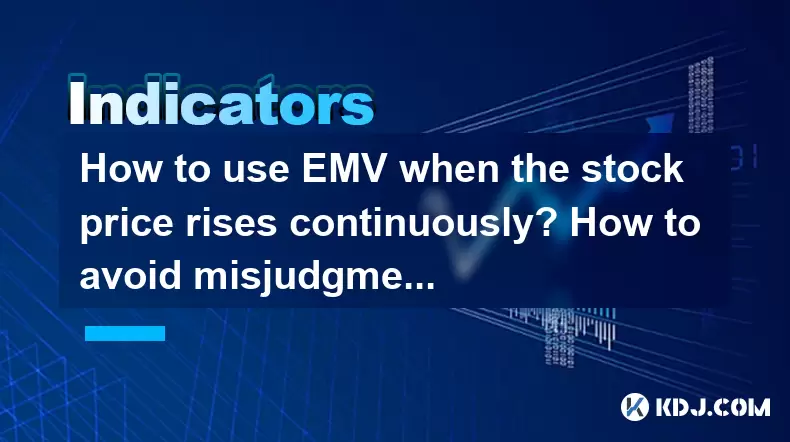
How to use EMV when the stock price rises continuously? How to avoid misjudgment in extreme market conditions?
May 23,2025 at 07:29pm
In the dynamic world of cryptocurrency trading, the Exponential Moving Average (EMA) is a powerful tool that traders use to make informed decisions, especially during periods of continuous stock price rises. Understanding how to effectively use EMAs and avoiding misjudgment in extreme market conditions are crucial skills for any crypto trader. This arti...
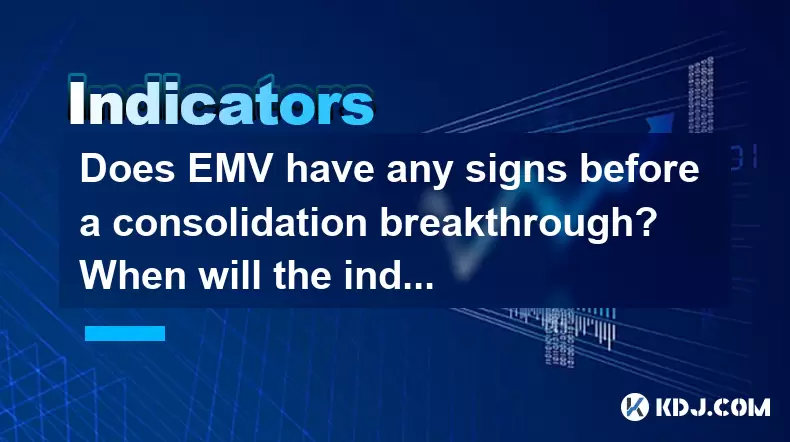
Does EMV have any signs before a consolidation breakthrough? When will the indicator give an early warning?
May 23,2025 at 06:42pm
Does EMV have any signs before a consolidation breakthrough? When will the indicator give an early warning? The Ease of Movement Value (EMV) is a technical indicator that helps traders understand the relationship between price and volume in the cryptocurrency market. It is particularly useful for identifying potential breakouts from consolidation period...
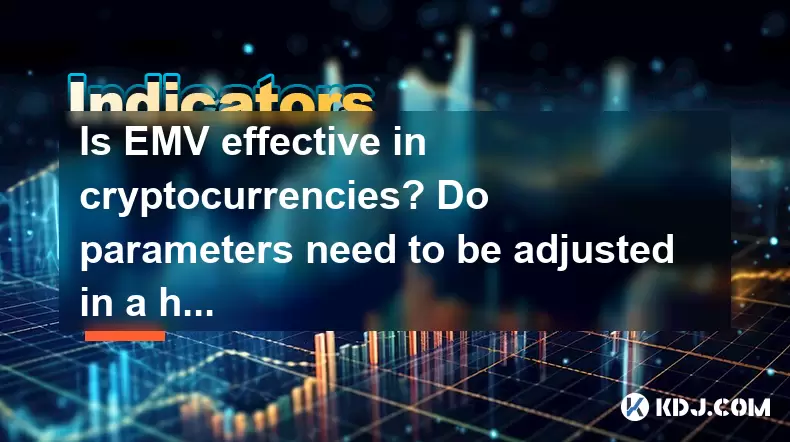
Is EMV effective in cryptocurrencies? Do parameters need to be adjusted in a high volatility environment?
May 24,2025 at 01:49am
Is EMV effective in cryptocurrencies? Do parameters need to be adjusted in a high volatility environment? EMV, or Ease of Movement Value, is a technical indicator that measures the relationship between price changes and volume. Originally developed for traditional financial markets, its application in the cryptocurrency space raises several questions ab...
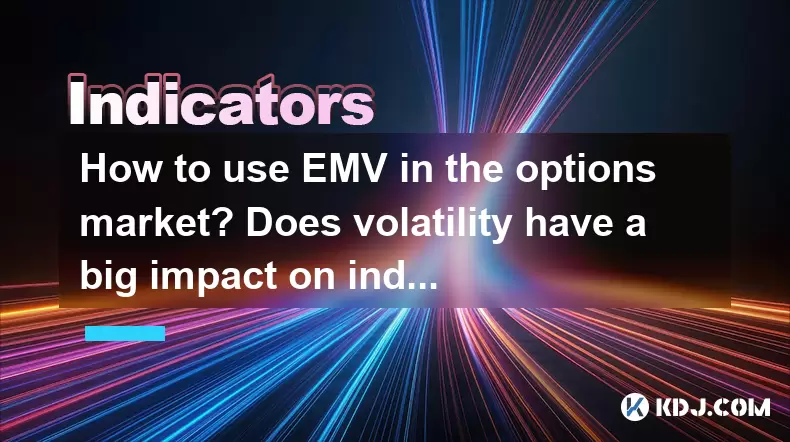
How to use EMV in the options market? Does volatility have a big impact on indicators?
May 24,2025 at 07:28am
How to Use EMV in the Options Market? Does Volatility Have a Big Impact on Indicators? The Ease of Movement Value (EMV) is a technical indicator that helps traders understand the relationship between price and volume, and it can be particularly useful in the options market. In this article, we will explore how to use EMV in the options market and examin...
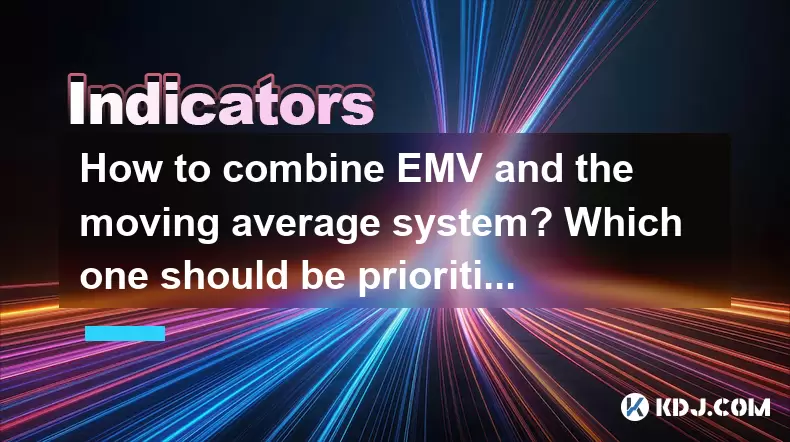
How to combine EMV and the moving average system? Which one should be prioritized when the golden cross and the dead cross appear at the same time?
May 24,2025 at 07:21pm
The combination of the Exponential Moving Average (EMA) and the moving average system is a popular strategy among cryptocurrency traders to identify potential trends and make informed trading decisions. This article will delve into how to effectively combine these tools, and what to do when the golden cross and the dead cross appear simultaneously. Unde...
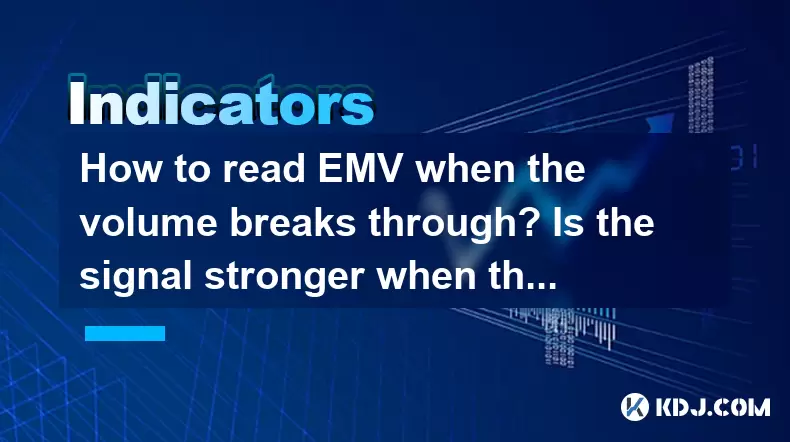
How to read EMV when the volume breaks through? Is the signal stronger when the volume and price cooperate?
May 24,2025 at 02:14pm
Understanding how to read EMV (Ease of Movement) when volume breaks through and assessing the strength of signals when volume and price cooperate are crucial skills for cryptocurrency traders. This article will delve into these topics, providing detailed insights and practical guidance. What is EMV and Its Importance in Cryptocurrency Trading?EMV, or Ea...

How to use EMV when the stock price rises continuously? How to avoid misjudgment in extreme market conditions?
May 23,2025 at 07:29pm
In the dynamic world of cryptocurrency trading, the Exponential Moving Average (EMA) is a powerful tool that traders use to make informed decisions, especially during periods of continuous stock price rises. Understanding how to effectively use EMAs and avoiding misjudgment in extreme market conditions are crucial skills for any crypto trader. This arti...

Does EMV have any signs before a consolidation breakthrough? When will the indicator give an early warning?
May 23,2025 at 06:42pm
Does EMV have any signs before a consolidation breakthrough? When will the indicator give an early warning? The Ease of Movement Value (EMV) is a technical indicator that helps traders understand the relationship between price and volume in the cryptocurrency market. It is particularly useful for identifying potential breakouts from consolidation period...

Is EMV effective in cryptocurrencies? Do parameters need to be adjusted in a high volatility environment?
May 24,2025 at 01:49am
Is EMV effective in cryptocurrencies? Do parameters need to be adjusted in a high volatility environment? EMV, or Ease of Movement Value, is a technical indicator that measures the relationship between price changes and volume. Originally developed for traditional financial markets, its application in the cryptocurrency space raises several questions ab...

How to use EMV in the options market? Does volatility have a big impact on indicators?
May 24,2025 at 07:28am
How to Use EMV in the Options Market? Does Volatility Have a Big Impact on Indicators? The Ease of Movement Value (EMV) is a technical indicator that helps traders understand the relationship between price and volume, and it can be particularly useful in the options market. In this article, we will explore how to use EMV in the options market and examin...

How to combine EMV and the moving average system? Which one should be prioritized when the golden cross and the dead cross appear at the same time?
May 24,2025 at 07:21pm
The combination of the Exponential Moving Average (EMA) and the moving average system is a popular strategy among cryptocurrency traders to identify potential trends and make informed trading decisions. This article will delve into how to effectively combine these tools, and what to do when the golden cross and the dead cross appear simultaneously. Unde...

How to read EMV when the volume breaks through? Is the signal stronger when the volume and price cooperate?
May 24,2025 at 02:14pm
Understanding how to read EMV (Ease of Movement) when volume breaks through and assessing the strength of signals when volume and price cooperate are crucial skills for cryptocurrency traders. This article will delve into these topics, providing detailed insights and practical guidance. What is EMV and Its Importance in Cryptocurrency Trading?EMV, or Ea...
See all articles
























